By Steve Corletta, Project Executive with LeChase Construction Services, LLC Preventing the spread of infections has always been a priority for hospitals and healthcare centers, but that mission has come into sharper focus in recent years with the emergence of COVID-19. A hospital’s strategy for preventing the spread of disease is a thorough regimen of Read more
Industry Blogs
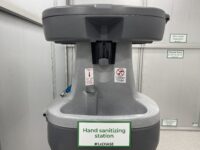
By Steve Corletta, Project Executive with LeChase Construction Services, LLC
Preventing the spread of infections has always been a priority for hospitals and healthcare centers, but that mission has come into sharper focus in recent years with the emergence of COVID-19.
A hospital’s strategy for preventing the spread of disease is a thorough regimen of disinfection and hygiene that includes scrubbing, wearing gloves and masks and diligently sterilizing equipment. But it starts with operating in a space that helps contain infections.
At LeChase, our extensive experience in hospital and healthcare construction has shown that a hospital’s construction partner plays a key role in containing infections, notably airborne germs. A well-constructed building is the stage on which infection–control measures take place. Airtight seals and negative air pressure in key rooms – and now in more rooms than before – ensure that air moves inward and prevent airborne germs from escaping into a corridor or adjoining room.
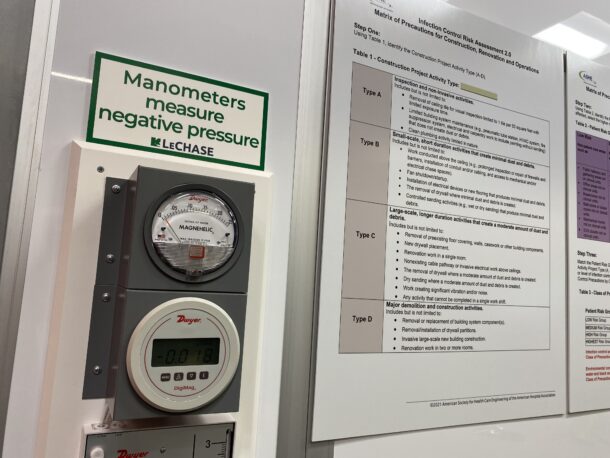
Historically, one or two rooms in a hospital wing of 20 rooms were specially built to contain infections. While that may have been sufficient when hospitals were concerned with breakouts that were less rampant, COVID-19 changed the equation. The fast-spreading pandemic showed that more such rooms were needed. Indeed, hospitals need to be prepared to isolate everyone in a wing.
This means more seals that need to be reliably airtight and more dedicated equipment for each room.
To meet the higher level of protection, LeChase applies the deeply ingrained understanding of quality control we have developed over many hospital construction projects. We also remain mindful of the hospitals’ costs, which can rise substantially with the higher capability to isolate patients. LeChase, a leading builder of healthcare facilities, applies its purchasing power and expertise to keep costs down.
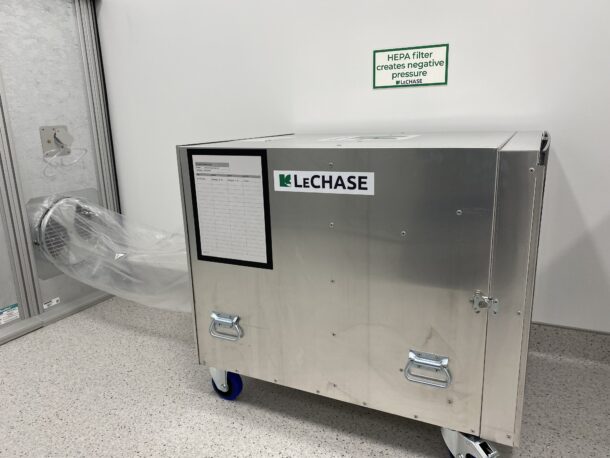
We demonstrated our dedication to infection control and efficient, high-quality construction at the University of Rochester, where we recently installed one of Synergy Med’s Clean Cube operating rooms in the recently-completed surgical center at the Center for Orthopaedics and Physical Performance. The prefabricated, pre-engineered room is the world’s first fully functioning, technologically complete smart-cube of its kind in an academic institution.
The unit includes a built-in, automated system that provides continuous 99.9 percent disinfection. Its glass walls are more hygienic, non-porous and easily cleaned than drywall or stainless steel and offer the ability to hermetically seal the space.
LeChase’s dedication to controlling the spread of infection begins with its own operations. In late 2021, the company took a major step forward in providing less disruptive, cleaner construction operations with the opening of its Infection Control Risk Assessment (ICRA) Center. The center trains crews to prevent dust and other contaminants from spreading from its construction projects – including hospital renovations and expansions that often take place near areas where medical personnel are treating patients.
Located at the company’s New York Metro office in Armonk, it was among the first ICRA centers developed by a private company in the country. By training construction staff to prevent the spread of dust and other contaminants, it plays an effective role in containing infections. As the Centers for the Disease Control and Prevention notes on its website; “Airborne transmission can occur when infected patients cough, talk, or sneeze germs into the air (example: TB or measles), or when germs are aerosolized by medical equipment or by dust from a construction zone.”
Construction companies who serve hospitals and healthcare facilities must commit themselves to being innovative and staying abreast of the latest developments in infection control. As key partners in helping prevent the spread of disease, the companies and their crews shoulder the responsibility of helping to prevent outbreaks, stem the spread of diseases already impacting a community, and even mitigate the impact of a pandemic.

Every day, it seems HVACR systems are evolving to work with new refrigerants, use less energy, and take advantage of new innovations. Since many customers want to use the best technology to heat and cool their homes and offices, staying up to date on these changes is crucial. Market shifts also change the way that Read more
Every day, it seems HVACR systems are evolving to work with new refrigerants, use less energy, and take advantage of new innovations. Since many customers want to use the best technology to heat and cool their homes and offices, staying up to date on these changes is crucial.
Market shifts also change the way that diagnostic tools are utilized. Staying up-to-date on both the latest HVACR systems as well as the tools used to diagnose and repair them has never been more important. Here are three ways that HVACR professionals can expand their knowledge and stay ahead of the curve.
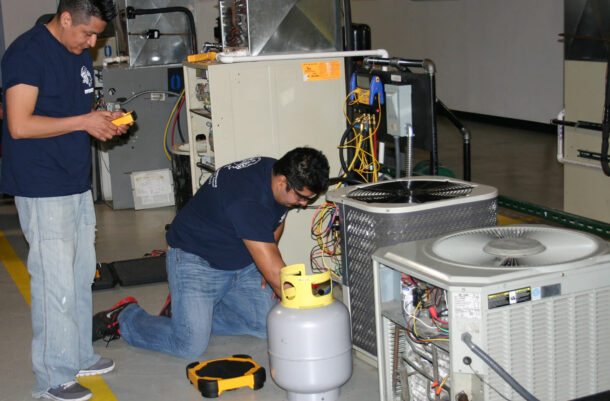
1. Stay Sharp
Continuing education can help a tech stay in the know and prepared for industry changes. Leveraging online tutorials, podcasts, videos, HVACR training meetings and conferences can help techs to learn the latest trends, stay current on emerging technologies, and utilize existing tools in the best ways possible. One such place is Fieldpiece University. This online resource was created to help HVACR technicians boost their skills and learn more about Fieldpiece products. These courses explore how each product benefits customers and offer Pro Tips for using them correctly in the field. This is an ideal tool for any HVACR professional looking to get the most from the tools they work with every day to get better, faster, and easier.
2. Help others
Learning on the job is another way to grow. Try volunteering with local charities or churches for pro bono work and for neighbors in need. Helping a family maintain an older furnace through the winter is a great way to gain experience on a legacy system. In an ever-changing landscape of HVACR technology, familiarity with a range of systems both old and new is yet another important tool in a tech’s bag. And helping your friends and neighbors adds an extra sense of accomplishment after a long day in the field.
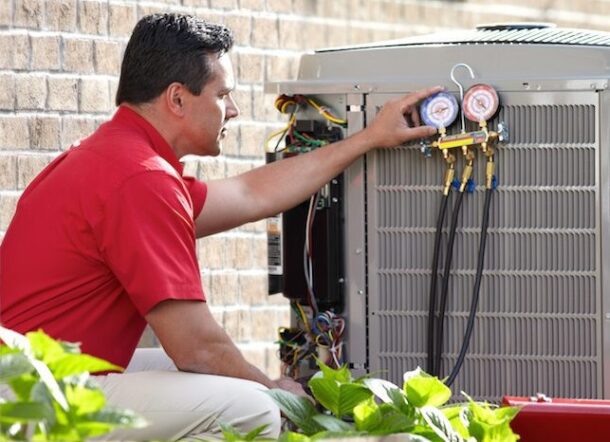
3. Leverage your senses
Before a tech opens their tool bag and starts running diagnostic tests, it’s important to know what needs fixing. Start by asking questions and really listening. Then use your eyes and touch to verify and pinpoint potential sources of those answers. The customer doesn’t need to be an expert in HVACR to answer. Questions about symptoms they can see and feel in their spaces may lead to finding the problem. Letting the customer speak typically points in the direction of the real reason for the call. The more useful information that’s gathered up front, the easier it can be to find the true cause of the issue. This may lead to a standard service, maintenance or even a system upgrade. Leveraging your ears, eyes, and touch will identify a whole host of potential issues and solutions and help ensure the right solution is put into place.
If you’re looking to be a better HVACR tech tomorrow, start learning, helping and listening TODAY. For more information about HVAC, check out Fieldpiece.

Business texting is a convenient way to reach customers, so you can complete projects and get paid faster. Texts are sent and received within seconds, making them the preferred method of communication for customers to schedule services and receive updates. The quicker you can coordinate with customers, the more you’ll boost your contractor business’s reputation Read more
Business texting is a convenient way to reach customers, so you can complete projects and get paid faster. Texts are sent and received within seconds, making them the preferred method of communication for customers to schedule services and receive updates.
The quicker you can coordinate with customers, the more you’ll boost your contractor business’s reputation and attract new business opportunities.
So how do you begin? These five tips below will help you connect with customers faster and increase your revenue flow.

-
Schedule service appointments via text
Streamlining your service scheduling process can make a crucial difference between potential customers choosing you over your competitors. Here’s how text messaging can help.
88% of people want to receive appointment scheduling texts from businesses. Customers love it as an option so they can reach out without having to make a call or send an email. Tell customers to text your business to schedule a service on your:
- Website
- Social media
- Advertisements
- In-office signage
- Service vehicles
Then when customers reach out to schedule an appointment, text a calendar link for them to book a time. This helps you connect quickly with your customers and coordinate where you need to be without skipping a beat. You’ll also be able to text for things like:
- Letting customers know if you’re arriving early or running late
- Asking for instructions on how to enter a property
- Rescheduling another time and date if anything comes up
- Enabling customers to reach out around the clock knowing they’ll get a response back
Keep services moving along by sending text reminders throughout the duration of a project, so you don’t miss out on lost time and revenue.
-
Send text service updates in real-time
Use text messaging to keep your team and customers on the same page at all times, so you can finish and get paid for projects faster. Depending on the situation, you can use texting to:
- Provide progress updates on a project
- Let customers know about any additional services that might need to be performed
- Ask for approval for additional charges
- Update customers on when you’re done for the day
MMS or picture messaging can go a long way when it comes to conveying these updates. For example, you can send pictures of areas that need work, completed jobs or the progress you’ve made, reps who will be doing the work, or even pictures of additional products customers may want to purchase along the way.
As you work through a project, you may need to follow up with customers to ensure progress continues to be made. Texting helps you get in contact with customers quickly, so you aren’t tied up on the phone when you could be working on a project. That means more projects done faster, and more revenue in your pocket.
-
Use texting to boost your customer service
Providing customer service via text can save you time and resources by reducing the need for phone calls or in-person meetings. Use texting to enhance your customer service by:
- Answering questions and concerns
- Encouraging customers to text photos and videos to illustrate a problem
- Following up with customers after a service
- Asking for a review
- General communications
By having your customer service communications all in one business text messaging platform, your team can easily see who’s been responded to and who still needs help. That gives you more accountability, insight into how your reps are responding, and an organized way to track customer interactions.
A solid text messaging platform will have a way to tag conversations, so you can assign contractors to specific customers based on their needs.
Most business texting software also allows you to leave private internal notes, so you have context when you revisit conversations. That way, you’ll be able to offer a more personalized approach to your customers every time you reach out.
-
Send promotions and offers with SMS marketing
Texting special promotions is a great way to attract new customers and retain existing ones. Share SMS offers like:
- Exclusive discounts and special offers to existing customers
- Free add-ons or upgrades to existing customers
- Combine multiple services for a discounted price, and promote them as a bundle
- Loyalty rewards for customers who use your services often
The best SMS promotions will be short, sweet, and tell customers exactly why it’s relevant to their specific needs and interests.
SMS marketing goes hand in hand with standard marketing methods such as social media, email newsletters, and other advertisements. You’re way more likely to get customers to take action when they see a back-to-back text, social post, and email about a new offer you have. Plus, 52% of people want to receive texts from businesses about promotions.
-
Settle bills with text payments
Get paid on time and more frequently when you enable customers to pay for your services through text, which is simply sending a link to an online portal for customers to pay.
Why should you consider text-to-pay for your business? It’s convenient, fast, secure, and can be done from anywhere. SMS payments work especially well for contractors since your team is constantly on the field at different locations, and the property manager might not always be present.
After completing a service, send a photo to prove you’ve finished, then text your customers a payment request with a secure link to pay. And if they have an upcoming bill or still haven’t sent a payment, text reminders are a great way to notify them of an outstanding balance. You can also ask customers for a new payment method if their current one is rejected or expired.
By providing a quick, convenient way to settle bills, you’ll speed up your cash flow and earn more money in the long run, while spending less to get it.
Reap the benefits of texting for your contractor business
Texting can be a powerful tool for contractors to communicate with customers while also promoting a wide range of services. With faster and more reliable communication, texting helps you increase your revenue, and boosts your business’s overall success.
Ready to use texting to leverage your contractor business? Find a business texting solution that’s right for you.
 Jessica Ayre is a content marketing specialist at Text Request, a business texting solution. If your business wants to start texting customers, Text Request can give you all the tools and resources you need to create a successful text messaging strategy.
Jessica Ayre is a content marketing specialist at Text Request, a business texting solution. If your business wants to start texting customers, Text Request can give you all the tools and resources you need to create a successful text messaging strategy.

Chris O’Grady, Chief Sales Officer, Successware Small business owners run into a slew of challenges every day, from customer service to accounting to managing the massive skilled labor shortage. Those in the home service trades are certainly familiar with these issues, as well as others that are unique to their industry. While many are daily Read more
Chris O’Grady, Chief Sales Officer, Successware
Small business owners run into a slew of challenges every day, from customer service to accounting to managing the massive skilled labor shortage. Those in the home service trades are certainly familiar with these issues, as well as others that are unique to their industry. While many are daily roadblocks that become business as usual, there are a few key issues related to business management software that fortunately can be easily improved upon. Addressing the following and embracing new tools will help you decrease overhead expenses and increase efficiencies by two to five times.
Issue #1: Trying to Integrate Multiple Software Packages Not Made for Our Industry, Combined with Poor Customer Service
If you have a big chunk of your expenses going towards multiple software packages, this is an area you’ll want to consider trimming. Many companies take an à la carte approach, choosing a business and field management system and then adding on a separate accounting package, dispatch system, call handling software, and more. They not only have to hire people with additional skill sets who know how to use the different systems, but they also end up duplicating efforts and data.
The right software should be designed specifically for your industry and be a one-stop shop for handling all of your small business’s needs. With the right platform, you won’t have to pay for extra software packages needed to run your business. This will then free up money for revenue-generating tasks.
You also want to choose a provider that offers a dedicated account manager, so you’re never left feeling like just another number. They should be a key resource for you and your employees, not someone you have to chase down for help or who doesn’t understand your industry. Good customer service is crucial during implementation of a new platform and beyond and can make or break how successful your company is with a new system.
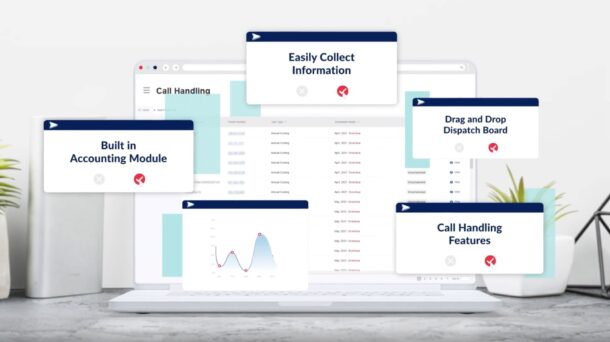
Issue #2: Poor Data Quality from Duplicate Data Entry
Running different aspects of your business on multiple software packages means entering the same duplicate information into each system. This puts your data at risk for discrepancies and human error. Again, one platform will eliminate the confusion.
Additionally, data that lives in multiple places is harder to analyze. When service and job history data live in the same place as your financials, it is then possible to create detailed reports on the health of your business with all sorts of metrics at your fingertips.
You also increase your efficiencies when everything is consolidated in one place. You’ll see and feel the difference when you save travel time with smarter dispatching, can quickly access customer information and get paid faster in the field with digital payments.
Issue #3: Poor Connectivity in the Field
Having a team out in the field also means you need a reliable way to exchange information between them and the home office. With the right mobile application, the flow of information between dispatchers and technicians will be cohesive. Data can be entered from the job site and come right back into your back-office platform.
Features and tools in a well-designed mobile system can solve a lot of in-the-field issues for the home service trades. Think digital forms to eliminate cumbersome and costly paper forms, remote timecard management and integrated consumer financing that allows customers to get on-the-spot financing.
With the right field service management software and back-office platform, you can go from needing one admin to handle every two field reps to one admin that can handle up to four. Meaning you are not only becoming more efficient but can scale and grow your business like you may not have been able to before.
What Do These Issues Mean for You?
If the issues detailed above hit home, you are likely overspending on your overhead expenses by paying for multiple software packages. This also means your business isn’t running as efficiently as it could be. Taking a streamlined approach will eliminate some of these common industry issues and provide your team with features and tools that help your business stand out with your customers, your team and prospective employees.
 Chris O’Grady has been in sales for 30 years, focusing on software sales for the last 20. Chris has been leading and growing sales teams for most of his career, with his most recent positions at FinancialForce and CBORD, where he led high-performing sales teams and was able to help drive tremendous growth for each company. In April 2022, Chris joined Successware as the Chief Sales Officer. He brought with him a proven history of business growth and increased sales performance. In his current role, Chris leads sales, sales operations, and customer success and is responsible for driving sales strategy.
Chris O’Grady has been in sales for 30 years, focusing on software sales for the last 20. Chris has been leading and growing sales teams for most of his career, with his most recent positions at FinancialForce and CBORD, where he led high-performing sales teams and was able to help drive tremendous growth for each company. In April 2022, Chris joined Successware as the Chief Sales Officer. He brought with him a proven history of business growth and increased sales performance. In his current role, Chris leads sales, sales operations, and customer success and is responsible for driving sales strategy.
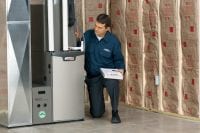
Most techs in the field want to be better, faster and more efficient at their jobs. Here are three things to focus on to help improve skills, satisfy customers and finish jobs more quickly and thoroughly. First, focus on airflow. HVACR is all about moving air around. No matter how efficiently a system runs, or Read more
Most techs in the field want to be better, faster and more efficient at their jobs. Here are three things to focus on to help improve skills, satisfy customers and finish jobs more quickly and thoroughly.
First, focus on airflow.
HVACR is all about moving air around. No matter how efficiently a system runs, or how expertly it’s fine-tuned, if the ductwork is too small, makes too many bends, has blockages or large gaps or leaks—the space is not going to be properly cooled or heated. Techs can frequently focus on “the box” because that’s where the technology is, and they ignore the rest of the system. Seasoned technicians understand the importance of airflow when installing a system, making sure duct systems are correctly sized, contain fewer bends, and allow for free flow of air throughout the entire home.
If you’re changing out a system, consider repairing or replacing necessary ductwork as well. Remember, older systems may contain asbestos, requiring certified professionals to aid in removal. Even in newer systems, it remains important to test for leaks and efficiency, so always be prepared to make revisions that improve overall performance in the long run.
Second, look for obvious problems.
When assessing a system, start with the easy stuff. Be alert and look for things that are out of the ordinary and may be symptoms of bigger problems. For instance, refrigerant oil stains on the floor could mean a refrigerant leak in the system. Use a flashlight to visually inspect the evaporator coils and blower wheels. By examining them for dirt or corrosion, you could uncover what’s causing the issues. Another quick, easy fix is the air filter. Swapping it out with a clean one immediately improves airflow and circulation.
Also, look for UV damage on control wiring. Sunlight tends to cause wiring to degrade prematurely, and this may adversely impact a system. By checking the entire system, it’s easy to judge the quality of workmanship and know how carefully to inspect other areas of the system.
Lastly, double-check your work.
No one intends to do subpar work, but sometimes steps are missed, and mistakes are made. Be sure to double-check everything throughout the day. This starts with caps and seals. Leaving them off is never OK. It’s a simple step to ensure they won’t be accidentally knocked onto the ground or lost behind a piece of equipment. Put caps and seals back on finger tight and snug hex flare caps up with a wrench.
When performing electrical work, don’t leave spade connections loose and don’t forget to properly torque contractor lugs. Also, never leave exposed wire. Strip back insulation to the length required to make the connection.
When the job is done and after performing a comprehensive run test at the end of a repair, do a final walk of the job and check all disconnects and set points. Also, perform a final cleanup and collect all tools. Leave nothing unchecked and nothing left behind.
While these three things are simple, they do help all HVACR techs work faster, safer and smarter on every job.
Pick up some of the latest in products for HVAC from Fieldpiece.

